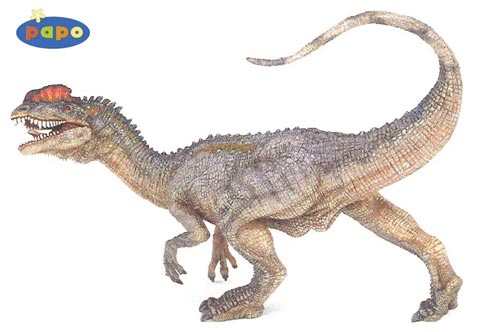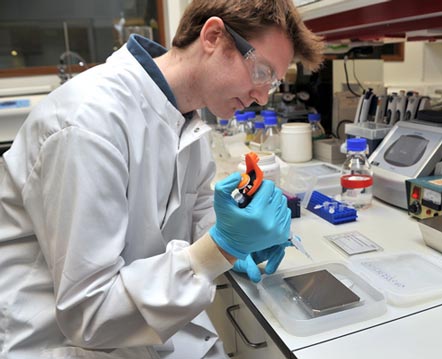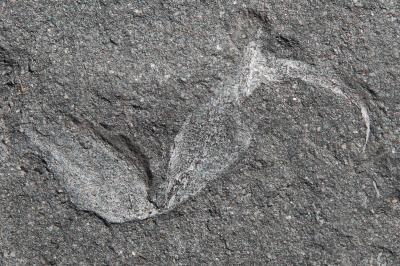Palaeontology Predictions for the Year Ahead (Dinosaurs, Fossil Finds and So Forth)
This year marks the centenary of the naming of the duck-billed dinosaurs Gryposaurus (Lawrence Lambe) and Corythosaurus (Corythosaurus casuarius named by Barnum Brown). This year, also marks the fiftieth anniversary of the palaeontologist John Ostrom finding fossils of an agile, meat-eating dinosaur that was eventually to become Deinonychus and the start of a research programme that was to dramatically change the way in which the Dinosauria were perceived.
Everything Dinosaur
It also fifty years since a team of geologists working in Niger (Africa), uncovered the nearly complete skull of an ancient crocodile that led to a much better understanding of the ancient predator Sarcosuchus. Indeed, back in 1964, thanks to another amazing skull fossil, scientists first got the opportunity to examine the double-crests atop the head of the carnivore now known as Dilophosaurus.
Important Skull Discovery in 1964 Helped Define Dilophosaurus
Picture credit: Everything Dinosaur
Just for a bit of a challenge to ourselves, we thought it a good idea to try to predict what news stories, events, fossil discoveries and other dinosaur and prehistoric animal related articles would be featured in this web log over the next twelve months or so.
Thanking Social Media Fans
Our thanks to all our Facebook and Twitter fans who made such wonderful suggestions. Many proposed that a new species of horned dinosaur will be named this year. Those who said this are very probably going to be proved correct, as we are aware of a number of specimens currently being prepared and examined in the United States which could well turn out to be new species of ceratopsian when their descriptions are published this year.
A number of people predicted that more evidence would be published this year supporting the theory that Tyrannosaurus rex was feathered. An interesting speculation, we are grateful for the suggestions received, even one that confidently predicted that a living dinosaur would be photographed in the Cameroon/Congo border region (Central Africa) – now that would be a great news story.
Putting aside any thoughts about cryptozoology for the time being, Everything Dinosaur team members have come up with a list of predictions. They are in no particular order and in about twelve months we will review them and see how we did.
1). Storms around the UK’s Coasts will Lead to a Number of Vertebrate Fossil Discoveries
This is quite a topical prediction, given the number of flood warnings issued and the battering our coastlines have been taking over the last few days, but back in early December the suggestion was put forward that with the very saturated cliffs around Black Ven (Dorset) or indeed at Hunstanton (North Norfolk coast), where the chalk strata is becoming increasingly unstable, a major vertebrate fossil discovery may be made.
Erosion will expose a lot of fossil material and excavations to help prepare and strengthen existing coastal defences could well lead to the discovery of a number of significant vertebrate fossils. How about a new ichthyosaur specimen from Charmouth or perhaps, a substantial amount of prehistoric mammal material from the Pleistocene aged cliffs at West Runton?
2). Further Insights into the Genetic Make Up of Hominins and The Relationship between Other Hominins and H. sapiens
There has been astonishing progress when it comes to the research being carried out into the genomes of ancient hominins. New techniques are permitting viable amounts of organic material to be extracted from older and older fossilised bones and in 2014 we expect further revelations regarding our own species, its ancestry and our relationship with others on the “human family tree”. Organic material such as collagen analysed from fossil samples will provide new and exciting insights into the genetic relationship of our own species to extinct species of earlier hominins.
Genetics and Bio-palaeontology Adding to Our Hominin Knowledge Base
Picture credit: Manchester University
3). Trailer for Jurassic Park IV to be Released
After several delays, the latest film in the Jurassic Park franchise “Jurassic World” is scheduled to be released next year. Over the next twelve months or so we can look forward to seeing the first official trailers for the film being released by Universal Studios. The film is supposedly being premiered as early as June 2015 and dinosaur fans have been promised that there are a number of new and very scary prehistoric animals in this fourth part of the franchise.
To read an article on “Badass Dinosaurs”: Very Scary Dinosaurs to Feature in the Next Jurassic Park Movie.
4). Polar Exploration Leads to Fossil Find
A number of exploration projects are currently being undertaken by oil companies both in Antarctica and within the Arctic Circle. Test drilling, sedimentary rock studies and borings will provide geologists with data on the potential for new fields of crude oil and natural gas. As the exploration continues, we expect that, as a result of this work, a number of body fossil discoveries will be made. Let us consider the search for fossil fuels in the Arctic Circle, given the ongoing research it seems probable to us that fossils of a marine reptile or perhaps a new species of ammonite will be found. It is also possible for more fossils of early tetrapods to be excavated perhaps from Greenland or some other related landmass in the high Arctic.
5). Three-Dimensional Printers Come of Age
With the price of three-dimensional printer technology falling all the time, more and more research laboratories and academic institutions will be able to afford these machines. Once linked to data from a CT scan, highly detailed, three dimensional models can be made and we predict that the application of this technology will lead to a number of advances including a better understanding of the brains and brain functions of early vertebrates. Analysis of those all important skull fossils (cranial material) using this non-destructive technique, will shed further light on the balance and motor skills of vertebrates, on their senses and on the relative sizes and function of different portions of brain tissue.
Computerised Tomography will produce images of fossil specimens, still entombed in a matrix and three-dimensional printers will be able to produce replicas of these fossils permitting a much more detailed analysis of the fossil material using this largely non-destructive technique.
6). New Species of Mammal (probably a rodent discovered in South-east Asia)
Each year many thousands of new species are named and scientifically described. However, the vast majority of these are invertebrates such as marine molluscs, insects and arachnids. There have been some new vertebrates discovered over the last two years or so, perhaps most notably the Olinguito (Bassaricyon neblina) from the northern Andes mountains. Everything Dinosaur team members predict that there will be a few more surprises revealed in the next twelve months, including a new to science, mammal species from South-east Asia.
7). Arthropod Study Leads to Further Evidence for the Common Ancestor of Spiders and Scorpions
From mammals to creepy-crawlies, we predict that 2014 will be an important year for those scientists attempting to understand the origins and early diversity of the Arthropoda. Arthropods represent the largest phylum in the Kingdom Animalia and include crustaceans, insects, mites, centipedes, millipedes, spiders and scorpions. Research into the origins of spiders and their affinities to the scorpion clade will progress further this year and perhaps a Cambrian aged common ancestor will be identified.
Exciting Arthropod Discoveries Predicted for the Year Ahead
Picture credit: University of Witwatersrand
8). Everything Dinosaur to Develop a New Dinosaur Workshop/Teaching Website
With all the outreach and teaching work currently being undertaken by Everything Dinosaur staff, a new section of the company’s website has been promised. We think that the project will get the go ahead in 2014 and a new part of the website dedicated to dinosaur workshops will be rolled out this year. The new elements will include examples of our many lesson plans, lots of free downloads, resources in support of the national curriculum, teaching guidelines and just about everything a teaching team require to help them teach children about dinosaurs, palaeontology and fossils.
This new section will add to the support we currently provide to schools, universities, museums and other educational bodies and should be a boon for home educationalists all over the world.
9). Further Evidence for Feather-like, Filamentous Integuments to be Found in the Ornithischia
Feathered theropods are now relatively well established with even the megalosaurs recently getting in on the act. However, there has been much less evidence published in comparison regarding feathered, bird-hipped dinosaurs. 2014 may see this change, with new academic papers published that describe a number of fossil finds (perhaps once again from Liaoning in north-eastern China), showing evidence of feather-like structures in association with ornithischian dinosaurs. This could lead to scientists postulating that, far from being the sole domain of the theropoda, feathers or feather-like structures evolved early on in the Dinosauria lineage.
10). Where will Everything Dinosaur Be in Terms of Social Media by the End of 2014 – Setting Targets
Tyrannosaurus Sue, will no doubt be keeping a watchful eye on team members once again this year. Given our partial success with last year’s social media targets, she, being the fiercest of all the known dinosaurs, will no doubt be keeping our noses to the grindstone as we set out new social media aims and targets for the next twelve months.
Our aims are as follows:
- Blog – to post up at least 365 articles in 2014 (if we do we will have posted up in excess of 2,800 articles in total).
- Ezine – to have 685 articles posted up on this platform by the year end
- YouTube – to have produced another 35 videos and seen viewing figures go over the 800,000 mark in total
- Pinterest – to have over 3,000 pins up on the Everything Dinosaur boards by December 31st 2014
- Facebook – 1,200 likes and to continue to post up pictures, articles, snippets and so forth to encourage lively debate.
- Twitter – 2,000 tweets
We do have other targets for social media but these are the ones closest to hand so we have popped them in.
For dinosaur models and prehistoric animal toys: Everything Dinosaur.
Over the next twelve months or so we will reflect on these ten predictions about what we will be writing about and of course at the end of the year we shall produce a blog article on how well (or how badly) we have done.
Happy New Year.






thanks and learnt lot about dinosaurs and recently i took a photo of a baby dinosaur footprint??? on a granite rock, tamilnadu, india, i want to confirm it because i am not an archaeologist
Highly unlikely, granite is an igneous rock, as such no fossils.